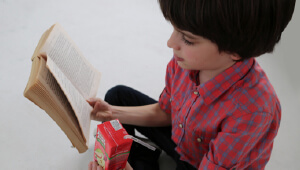Rainy Days


Reading aloud and making crafts can become some of your child’s happiest memories and spark a love of learning that lasts a lifetime.
Standing at the window while raindrops pelt the glass, your child might think his day is doomed. Here’s your chance to turn a negative into a positive. Gather a stack of books and craft supplies and show him how much fun the two of you can have inside. You’ll both be enriched in all kinds of wonderful ways.
Reading aloud allows you to be physically and emotionally close.
As a story unfolds, you each learn what makes the other laugh or feel sad. If you ask open-ended questions along the way (“What would you do?”), you’ll get to enjoy your child’s unique outlook on life. And by listening and affirming, you’ll help him develop thinking skills and his sense of self too.
Books also can offer clues about what motivates your child. If your preschooler adores his elephant book, for example, go with it. Provide clay for making elephant figures; gather branches outside and pretend the elephants are roaming the wild. Dream with him about going on safari someday. It all helps your child to be hopeful and curious about life as she grows.
Reading aloud also enhances language skills.
Preschoolers pick up on the rhythm of language and learn new words as they listen, says Dr. Linda Gambrell, director of the Eugene T. Moore School of Education at Clemson University in Clemson, South Carolina. When compared to TV and everyday talking, “books are by far where you are going to find rich, rare and unusual language,” she says. “There is no comparison.”
Beginning readers learn expression, dynamics and fluency by listening to experienced readers. And preteens will tackle more challenging books if you’re in it together. Take turns reading every other page and take time to discuss the concepts and dilemmas presented.
Talking about what you’ve read teaches your child that books present ideas that can be springboards for thinking, sharing and creating. That’s why books and crafts work together so naturally.
As a bonus, craft projects build additional skills. “Hands-on is proven to be the best way for kids to learn,” says Sheila Ellison, author of 365 Days of Creative Play. As they work on projects, kids develop fine-motor skills, learn colors and shapes, and understand how design elements work together.
And at any age, creating builds confidence, which will serve your children in school and beyond. “They have the experience of forming something with imagination,” Ellison says. “It’s a lifelong skill.”
All activities should be parent supervised. Parents, please make sure that the tools and items needed for a project are appropriate for your child.


